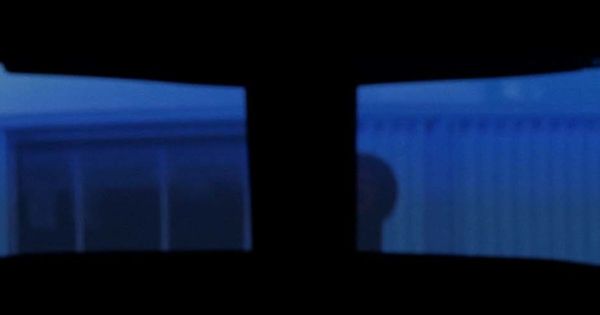Eye For Film >> Movies >> The Tyranny Of Petty Things (2021) Film Review
The Tyranny Of Petty Things
Reviewed by: Andrew Robertson

The essence of flying as a pilot is "you, the aeroplane, and the sky."
The title comes from Antoine de Saint-Exupery, author of The Little Prince. "I fly because it release my mind from..." and so we go. While rooted in an interview with its subject, James Bushe, there's plenty of archive footage. In his words "I kind of have a cinema real of all the time I've taken off from this runway." Not just in the simulator, the countdowns of switch and throttle and film reel.
One of the propeller craft is a 1950-built de Havilland Chipmunk, G-AOUN. The sleek t-tailed passenger jet is the Vickers VC-10, part of the same jet age that gave us Thunderbirds. That's in BOAC livery, back when the British Overseas Airways Corporation was a thing that made sense. The rocket is Kosmoskrator from Der Schweigende Stern (The Silent Star, aka First Spaceship On Venus, Planet Of The Dead, Spaceship Venus Does Not Reply). That's a 1960 Polish/East German science fiction film based on an even earlier work by Stanislaw Lem, which amongst other things has a potentially world ending event accidentally triggered.
There's one other visible craft. G-AWAD is a Beech B55, a twin-engined training craft whose distinguished career included a nose-gear failure at the age of 23. Bushe' career experienced a similarly significant event. An HIV diagnosis meant he could not qualify as a pilot. So began a struggle to change the rules.
With archive footage not only of aircraft but Bushe, this is a story that is at once deeply personal and indicative of changing attitudes. I can't claim to have forgotten the AIDS: Don't Die Of Ignorance campaign, it's from 1986 and I was (for various reasons) not the target audience. The fact that both parts (Iceberg and Monolith) were directed by Nicolas Roeg and voiced by John Hurt would serve to underscore just how 'alien' the condition was perceived to be. It's also the only time they worked directly together, though both were involved in 1987 anthology film Aria, Roeg's opening segment starred Theresa Russell and Stephanie Lane, and Hurt's closing segment was directed by Bill Bryden. That the first segment is about the attempted assassination of King Zog of Albania after attending a performance of Pagliacci, and the last is about Pagliacci, is just one of those bits of odd film circularity that makes history as complex.
Cameron Nicol's film was made with the support of the Terence Higgins Trust, and ends with some bleak statistics. HIV/AIDs is a condition that thanks to modern medicine is not only manageable but can be rendered nigh impossible to pass on. That the law does not yet reflect this in many places is as much because of prejudices brought through history as a lack of access to that medicine. Nicol's film manages through its use of archive to create this sense of historical context. While flying might reduce the world to you, the aeroplane, and the sky, all three have an impact on travel. Context and greater context, intent and impact. It's in that act of balance, ably assisted by Nicky Green's score, that we get a sense of progress. No arrival yet, however, plenty more ground to cover, for while Bushe has had opportunity to soar plenty more are still constrained by surly bonds. One can only hope this film helps others to navigate, per ardua ad astra.
Reviewed on: 04 May 2022















